Why are there so many different kinds of Salt? A Chef/Geologist’s Guide
As an Amazon affiliate, I earn commission from qualifying purchases made with links on my website. Thank you for your support!
Remember that time when you were in a pinch because you ran out of salt (pun intended hehe)? Then, as you stare at the gazillions of salt options in front of you at the grocery store you wonder, “Why are there so many different kinds of salt anyway? And which one is the best? Do they all have a different taste?”
I’m taking off my chef’s hat for a moment and putting on my Geologist’s hat today to share a rare moment when two of my areas of expertise happen to coincide to answer all your questions about salt. Although it is not my intention, you may turn into a salt-snob by the end of this article. You have been warned.
What is salt?
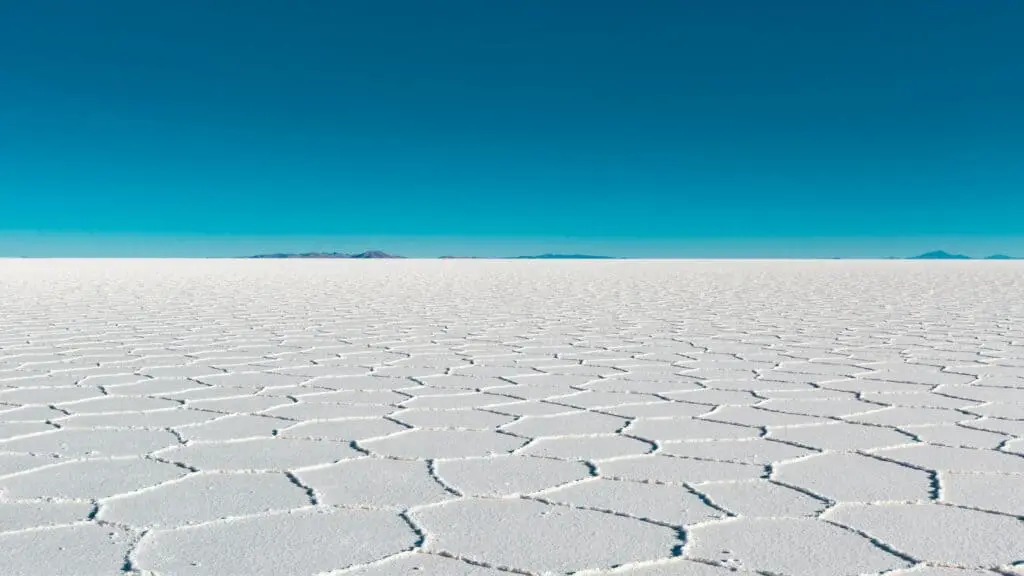
Simply speaking, salt is a mineral; a naturally occurring inorganic solid substance formed by the earth. There is a much more technical definition for people interested in chemistry at sciencing.com. For now this blog post will focus on the salts we humans like to eat (because, you know, there are some types that are not meant for human consumption).
There are many different kinds of salt because the 3D lattice-work structure inside the salt mineral acts like a net, trapping microparticles of the surrounding environment inside the crystals as they form. These trace minerals create unique colors and flavors depending on the region in which the salt was formed. Harvesting and processing salt in different ways creates even more unique varieties that are available for eating today.
Halite (made from the combination of the elements Sodium and Calcium or “NaCl”) is the mineral name for the salt that humans eat. Now raise your hand if your science professor asked your entire class to lick and pass a big piece of Halite crystal around the whole room? Anyone? Anyone? Oh…. was that just me? (True story from the 90’s.)

As creepy-gross as that was for me (I BARELY touched the tip of my tongue to the crystal) and how backwards that seems after suffering though a pandemic, Halite salt has some unique properties besides seasoning our food. Salt is also an antibiotic because it sucks the water out of living cells (including bacteria cells) and kills them. Why do you think you get so thirsty after eating salty food? Same reason.
Do different types of salt taste different?
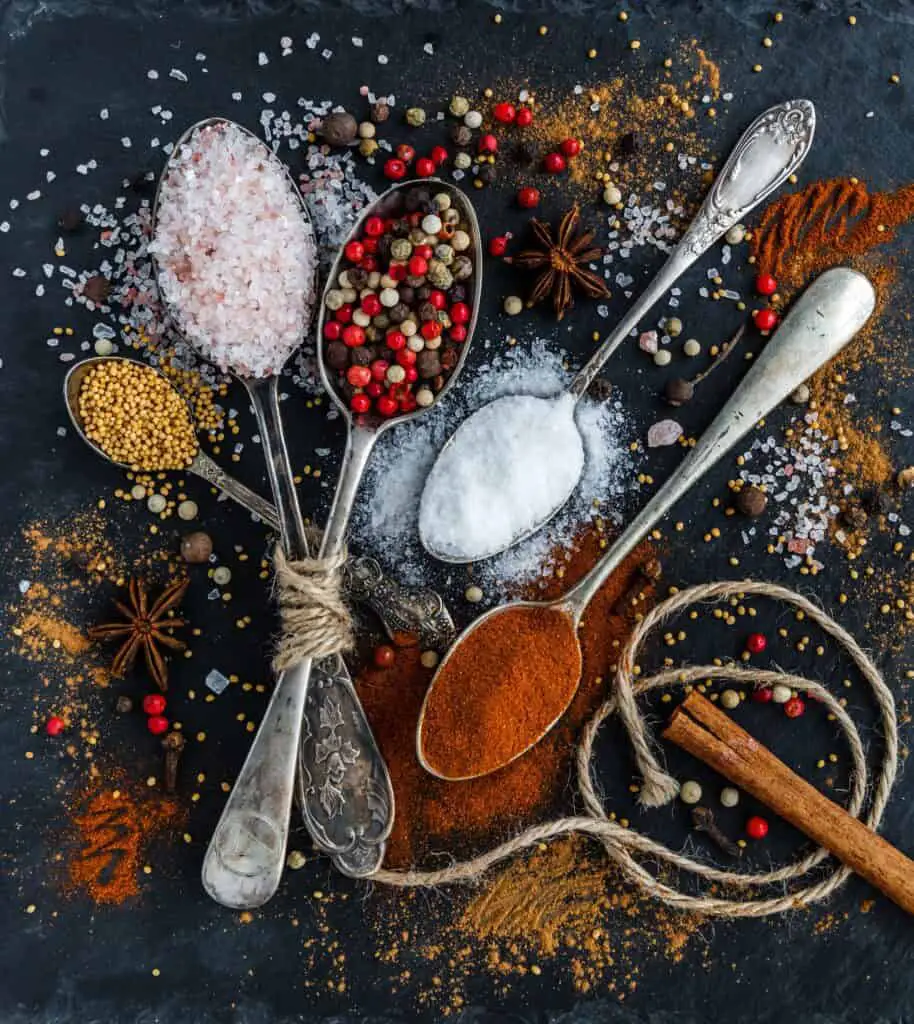
Yes different types of salt can taste different, depending on how sensitive your taste buds are and how strongly flavored the salt is. Some salts, such as smoked salt, herbed salt, or black salt have flavors and ingredients added by people. For other salt varieties, each has it’s own ‘created-by-nature’ flavor profile that can add another dimension to the foods it’s used with. Table salt and iodized salt are the exception however, as the refining process it is put through removes the micro-impurities that add flavor to raw salt.
Halite salt dissolves very easily in water, and through chemical processes shared here, fills the water in our oceans. When ocean water dries out- it leaves solid salt deposits behind. This process has been happening since the first oceans formed on our planet, and through the natural movement of plate tectonics, salt deposits that used to be by ancient oceans can end up in the middle of mountains (Himalayan pink salt) or buried thousands of feed below and used to store crude oil.
Each geologic formation of salt will be slightly different because the surrounding geology will be unique for each location.
What is the difference between types of salt?
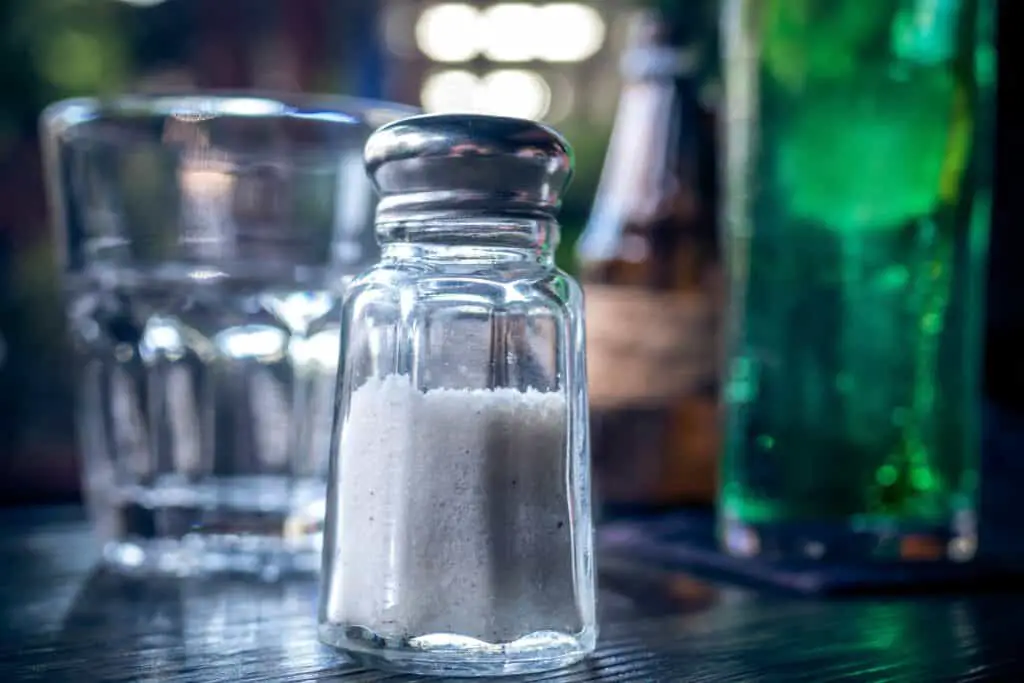
The most common types of salt you’ll see at the grocery store are:
- Table salt- the most common type of salt, it is usually mined from underground. It is refined to a small grain and is purified and stripped of any impurities or microparticles to create a uniform taste. Also includes anti-caking chemicals to keep it form forming clumps in packaging.
- Sea salt- made from evaporated sea salt it is slightly more coarse than table salt but is not stripped of impurities and does not have any anti-caking additives.
- Kosher salt- a coarse textured salt with absolutely no additives whatsoever. Used to prepare traditional Jewish foods because it follows their dietary law.
- Himalayan pink Salt- Himalayan pink salt comes from just one mine in the Himalayan mountains and contains trace amounts of most of the minerals we possess within our own bodies. The science is still out as to whether there’s enough of the trace minerals to actually be beneficial.
- Iodized salt- Refined and processed table salt mixed with a small amount of Iodide; a necessary element for our thyroid glands to function properly. It keeps us from getting a goiter! (Enlarged thyroid gland.) People living near coastlines naturally receive all the iodine they need, but folks who live far away from the ocean used to suffer much more with goiters then they do now.
- Rock salt-Very large, pebble-sized raw Halite mineral salt used for making ice cream.
- Epsom salt-Magnesium sulfate salt, NOT Halite salt. Used mostly for treating sore muscles and amending soil to help plants grow.
A few Gourmet varieties I doubt we’ll be seeing at Walmart anytime soon (but there’s always ordering online!):
- Smoked salt- salt that has been smoked for several hours over smoldering cedar, hickory or other aromatic types of wood. This salt is most often used as a finishing salt for grilled meats or vegetables.
- Cyprus black or Hawaiian black salt– coarse sea salts mixed with activated charcoal making them turn black and infusing the salt with antioxidants. Used only as a finishing salt.
- Hawaiian red salt– volcanic clay containing iron oxides (rust) give this salt its red hue.
- Flake salt- thin crunchy sea salt crystals best used as a garnish for a finished dish.
- Fleur de Sel– this premium gourmet salt variety is coveted by chefs around the world for its aromatic flavor and mixture of various sizes of grains. It is combed from the surface of evaporative tidal pools along the French coast. This variation in grain size allows some salt to melt into the food immediately while the larger grains last longer.
- Sel Gris– created in the same location as Fleur de Sel, but more raw (or less refined and less expensive) this salt can be used in everyday cooking before, during and after cooking a dish. It is harvested at the bottom of the evaporative tidal pools.
What is the best salt for cooking?
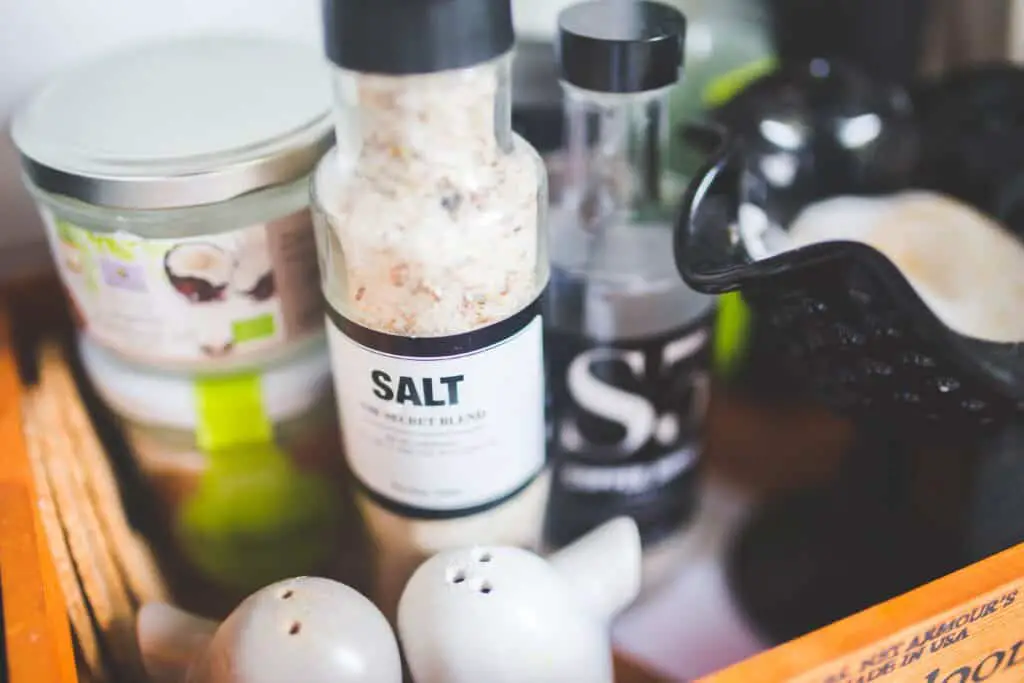
There are many different kinds of salt that are great for cooking. The best salt for seasoning food while cooking is any small-grain (or ‘fine’) salt that can quickly and easily melt and be absorbed into your food. Some fancy chefs like to sprinkle a more coarse ‘finishing salt’ over their finished dish to add texture, sparkle and a bit of crunch; this works well for for steaks, salads, bread or vegetables.
What is the highest quality salt?

Fleur de Sel is regarded as the highest quality gourmet go-to salt for professional chefs around the world. It is renowned for it’s strong aromatic flavor and versatility. I have been using this salt for years and I love it and highly recommend it.
If you’re a newbie home chef don’t worry about all the fancy gourmet salts out there. Table salt is perfectly fine and dandy. I personally use either table salt or fine ground Himalayan pink salt for most of my cooking.
I do have a small container of Fleur de Sel for sprinkling over the occasional fancy Beef Pot Pie I sometimes cook at home for my family, or for my food photography to give that extra oomph to my extreme close-up photos. Any kind of salt will make your food taste better. Just remember to use it in moderation and always add it in small quantities. Remember, you can always add, but NEVER take away while you’re cooking.

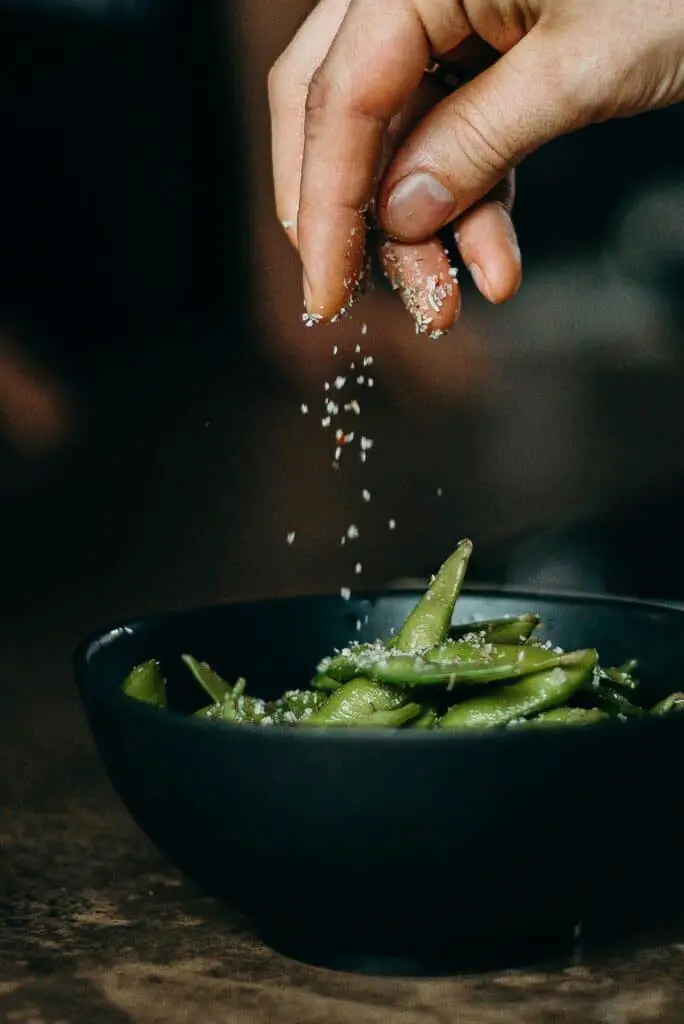






Thanks for sharing!